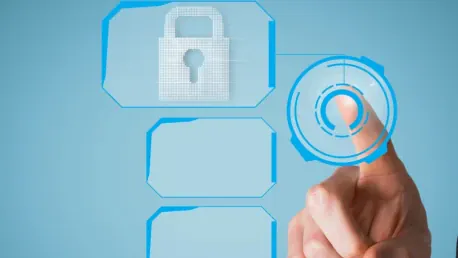The shift towards more secure authentication mechanisms has become increasingly imperative in today’s digital landscape, where cyberattacks are growing more sophisticated by the day. Google recently announced a significant change to its security protocols, phasing out SMS-based two-factor authentication (2FA) for Gmail accounts and introducing QR code-based authentication. This move aims to mitigate the vulnerabilities and evolving threats associated with SMS authentication, ensuring that users’ accounts remain secure in the face of ever-evolving online threats.
The Vulnerabilities of SMS-Based 2FA
Increasing Cyber Threats Targeting SMS Authentication
Historically, SMS-based 2FA was lauded for its ease of use and widespread adoption, providing an additional layer of security by requiring users to enter a six-digit code sent via SMS. However, its effectiveness has been progressively compromised due to a surge in sophisticated cyber threats. Phishing scams, which trick users into divulging sensitive information, have become increasingly targeted and convincing, posing a significant risk to those relying on SMS-based 2FA. Cybercriminals have also turned to SIM swapping, wherein attackers manipulate mobile carriers into reassigning a victim’s phone number to a new SIM card, enabling them to intercept SMS verification codes and gain unauthorized access to accounts.
Adding to the complexity, traffic pumping schemes have surfaced as a lucrative method for fraudsters. By exploiting vulnerabilities in service providers’ systems, attackers can flood the network with mass SMS verification messages to numbers under their control, thus generating revenue through fraudulent means. The inherent reliance on mobile carriers and the vulnerabilities within their infrastructures make SMS-based 2FA increasingly susceptible to such malicious exploits.
Rising Concerns Over SIM-Swapping and Phishing Schemes
SIM-swapping attacks have emerged as a particularly potent threat, enabling cybercriminals to circumvent SMS-based 2FA protections with relative ease. In such attacks, perpetrators deceive mobile network providers into transferring a victim’s phone number to a new SIM card, effectively commandeering their phone line. Once in control, these attackers can intercept SMS authentication codes, rendering the additional security layer virtually ineffective. Furthermore, this method of attack bypasses traditional security measures, as it exploits the human element within mobile carriers’ customer service operations.
Phishing schemes, too, have evolved to target SMS-based verification procedures. By crafting convincing messages or websites that mimic legitimate services, cybercriminals can lure users into unwittingly disclosing their SMS verification codes. These tactics often involve creating a false sense of urgency, prompting users to act hastily and inadvertently compromise their own security. The combination of these threats has underscored the need for more robust and resilient authentication methods that do not rely on SMS.
The Transition to QR Code-Based 2FA
Advantages of QR Code-Based Authentication
In response to the escalating threats against SMS-based 2FA, Google has begun the process of transitioning to QR code-based authentication. This method offers several distinct advantages over its predecessor, primarily in terms of security and user experience. By prompting users to scan a QR code with their smartphones, this approach mitigates the risk of interception associated with SMS messages. The generated QR code, once scanned, facilitates a seamless and secure authentication process, effectively nullifying threats like SIM swapping and phishing.
One of the key benefits of QR code-based authentication is its independence from mobile carriers. This autonomy eliminates the vulnerabilities inherent in carrier-based systems, reducing the attack surface available to cybercriminals. Additionally, the QR code mechanism simplifies the user experience by obviating the need for manual code entry, streamlining the authentication process, and enhancing overall security.
Industry-Wide Shift Towards Secure Authentication Methods
Google’s decision to adopt QR code-based 2FA aligns with a broader industry trend favoring more secure and innovative authentication methods. Major technology companies, including Apple, Microsoft, X, and Evernote, have already transitioned to alternative security measures, such as authentication apps, passkeys, and physical security keys. These methods are favored for their robustness against common threats, offering enhanced protection for users’ accounts.
The shift towards QR code-based authentication is part of a larger movement within the tech industry to move away from SMS-based 2FA, which has been identified as a weak link in account security. Cybersecurity experts have consistently warned about the risks associated with SMS authentication, including the ease with which attackers can hijack phone numbers and intercept codes. By embracing more advanced authentication techniques, companies aim to provide users with the highest level of security while minimizing potential vulnerabilities.
The Future of Account Security
Gradual Transition for Gmail Users
For Gmail users, the transition to QR code-based authentication will be implemented gradually over the coming months. Google has yet to provide an exact timeline for the complete phase-out of SMS-based 2FA, but it is anticipated to encourage users to adopt passkeys and authentication apps to enhance their security. In preparation for this transition, users are advised to explore alternative security measures, such as physical security keys and Google Authenticator, to stay ahead of potential threats.
During this period of change, Google will provide guidance and support to facilitate a smooth transition for its users. The company’s commitment to enhancing security underscores its dedication to protecting users’ accounts from emerging threats, reinforcing the importance of adopting more secure authentication methods in today’s digital landscape.
Proactive Measures for Enhanced Security
In today’s digital world, where cyberattacks grow increasingly sophisticated, the push for more secure authentication methods has never been more critical. Recognizing this, Google has announced a significant update to its security protocols. The company plans to phase out SMS-based two-factor authentication (2FA) for Gmail accounts, replacing it with QR code-based authentication. This change is being implemented to address the vulnerabilities and evolving threats linked to SMS authentication, which can be more easily targeted by attackers. By moving to QR codes, Google aims to provide a more robust defense for users’ accounts, ensuring they remain protected against the ever-advancing landscape of online threats. The shift underscores the importance of staying ahead of cybercriminals and adopting more advanced security measures to safeguard personal information. As digital threats continue to evolve, this proactive step by Google highlights the ongoing need for improved security technologies to keep user accounts safe.









